Chelsea FC star Sam Kerr is taking the stand this week, as her trial for allegedly verbally abusing a white London police officer got underway on Monday.
The Australia national team captain pleaded not guilty to one count of racially aggravated harassment before testifying on Wednesday.
While the celebrated striker did not deny calling PC Stephen Lovell "stupid and white" as documented by the officer's body camera, Kerr's legal team is arguing that both the specific incident and "the law is a little more nuanced, a little more human than that."

Kerr describes "terrifying" cab ride at trial
The incident in question occurred in January 2023, when Kerr and her fiancée, USWNT and West Ham midfielder Kristie Mewis, experienced a concerning late-night taxi ride.
Kerr testified that she leaned out of an open window after beginning to feel sick during the the ride. She alleges that the driver then rolled up the window and proceeded to "drive dangerously," including "swerving in and out of lanes."
The erratic driving allegedly lasted 15 to 20 minutes. Kerr also told the jury that the driver refused to stop or unlock the doors and windows.
"I was terrified for my life," the 31-year-old testified. "We were not in control... I deemed him to be dangerous because of the driving but also because he could have taken us anywhere. He couldn’t be tracked so no one knew where we were."
Mewis eventually "kicked out [the window] with her boot" in an attempt to escape what they thought was a kidnapping. As a result, the driver delivered the pair to the police station.
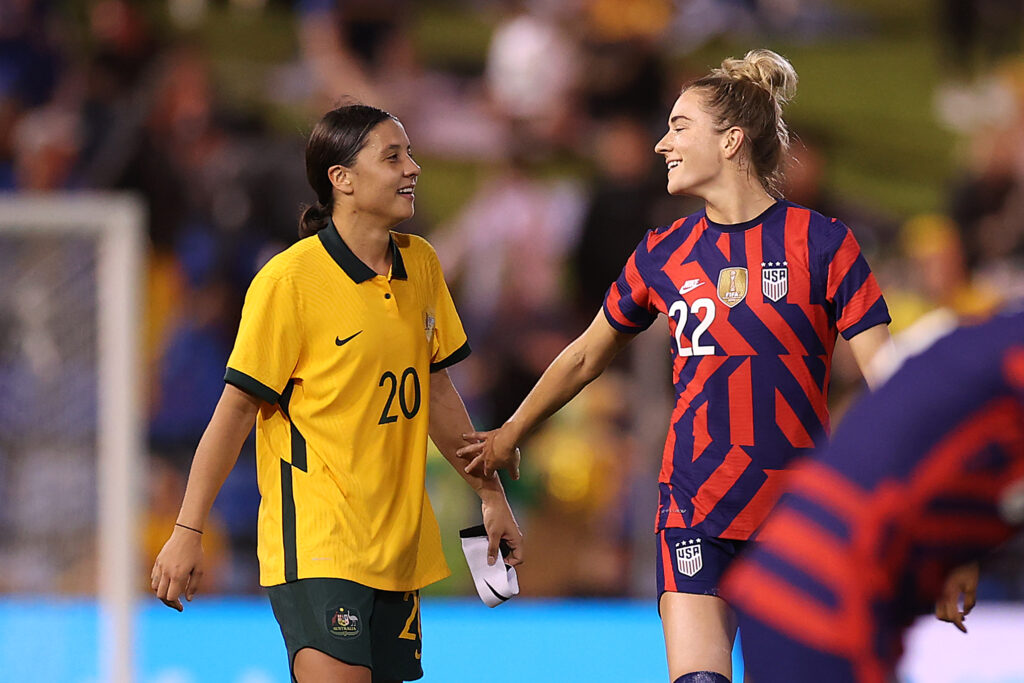
Perceived lack of help sparked comment from Kerr
At the police station, the couple told officers about their experience. Kerr says she felt that the police did not believe them, prompting the heated exchange.
"The words were a comment, we say — however poorly expressed — about positions of power, about privilege and about how those things might color perception," Kerr's lawyer Grace Forbes argued.
"I expressed myself poorly in that moment. What I was trying to get across was I felt that they were treating me differently and not believing me and treating me as a person that had done something wrong," Kerr elaborated.
"They were in a position of privilege and power. I believed they were treating me specifically differently because of the color of my skin."
Notably, the Crown Prosecution Service (CPS) originally decided not to charge Kerr. They had determined that the only outcome of a prosecution would be a simply apology from the soccer star.
While PC Lovell's initial statement made no mention of Kerr's comments having any impact on him, he submitted a second statement in the wake of CPS's decision to not prosecute, later claiming the footballer's words had been harassing.
CPS authorized the charge in December 2023, nearly a year after the incident occurred.
Arsenal confirmed USWNT defender Jenna Nighswonger as their newest signing on Thursday, with the ex-Gotham FC midfielder becoming a symbolic center-point for the recent exodus of NWSL stars heading overseas.
The 2023 NWSL champion is just the latest in a number of Gotham FC's offseason departures, as the NY/NJ club's superteam experiment resulted in a roster that's bursting at the seams.
At 24 years old, Nighswonger also finds herself among a group of NWSL players currently moving away from the US league. She follows USWNT teammate Naomi Girma — who last week signed with Chelsea for a record fee — 2023 NWSL MVP Kerolin, and other standouts to England's top-flight Women's Super League (WSL).
These moves have reignited longstanding discussions surrounding parity and superiority within international women's leagues. And with so many moving parts, it's easy for a single player to get caught up in a worldwide debate that far eclipses their career. But as Nighswonger tells it, the decision to sign with Arsenal comes from a simpler, more personal place.
"Playing in England is just something that I've always wanted to do," she told Just Women’s Sports this week in the lead-up to Arsenal's announcement. "So sometimes when an opportunity presents itself, even if you're happy at a club, you just have to take a leap of faith."
Of course, Nighswonger is less interested in comparing the NWSL to the WSL, preferring instead to detail her own footballing journey. "I have nothing but positive things to say about Gotham and the NWSL," she continued. "I think [transferring] is just a fun opportunity to play in another country, and learn about a new culture."
The opportunity to join Arsenal came about quickly. Though Nighswonger noted that any offseason comes with the possibility of player movement.
"My agent just called me and I was through the moon, just so excited," she said.
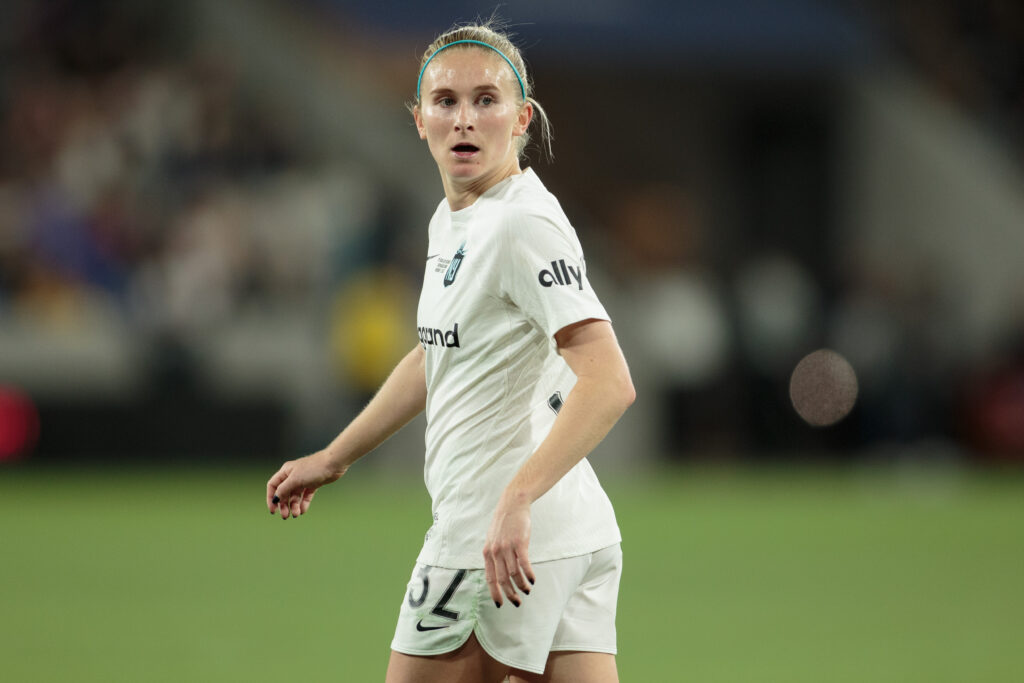
A fitting positional pick-up for Nighswonger
Beyond the headlines, the transfer is clearly a good positional fit for Nighswonger's continued development. Despite originally launching her professional career as an attacking midfielder, she moved to left-back after winning 2023's NWSL Rookie of the Year award in the role.
"I'm so grateful for [Gotham]," she said. "Because when they picked me up out of college, I was an attacking mid, and they saw the vision and had confidence in me to be a left-back."
The 24-year-old's successful conversion piqued the attention of the USWNT senior team. Going from a position of depth to one that centers on consistency was especially appealing for the national team. Subsequently, Nighswonger featured as an option off the bench for the US during last summer's Olympic gold medal run. However, she has yet to unseat 32-year-old Crystal Dunn to claim a starting spot in any major competition.
Dunn herself is just one example of an attacking-minded player making the move to outside-back at the international level. As such, Nighswonger trusts that the more appearances she has on the flank, the more comfortable she will become.
"When I first changed to left-back, I was kind of like, 'What am I doing?'" she recalled. "I had a little bit of a moment — I thought I was the No. 10, that's what I've been for a while. Then switching to left-back, I started to love it more and more."
"I might not have the experience that all these other left-backs have," she added. "But I have talents coming from other positions that are useful as well."
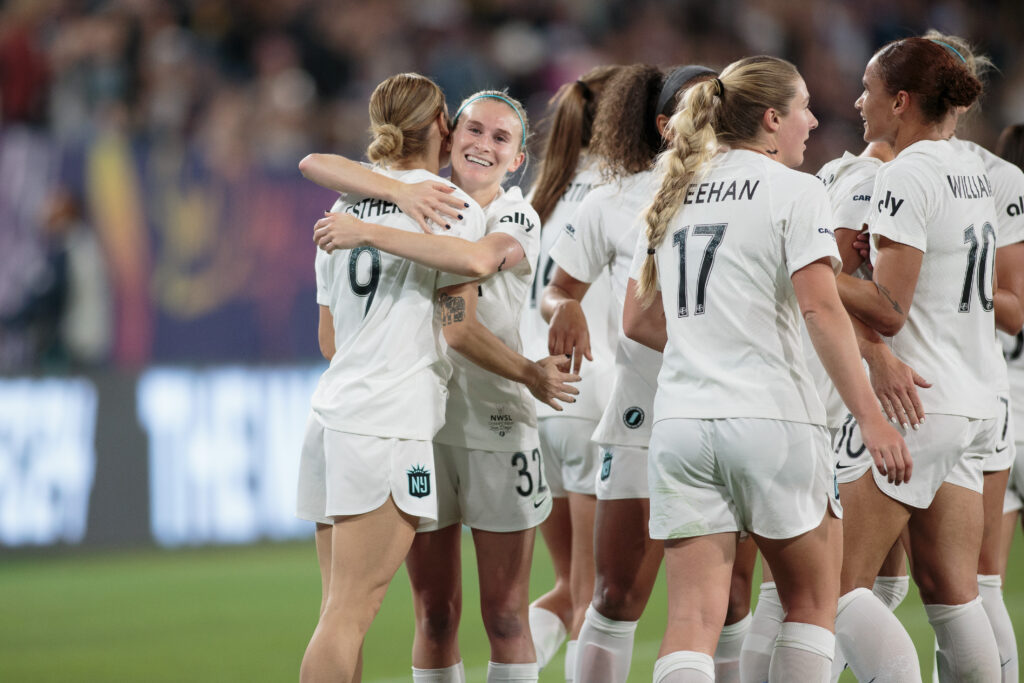
Becoming a two-way player with Gotham
As she shifts through thirds on the pitch, Nighswonger is certainly attacking-focused. But she increasingly feels drawn to becoming a true two-way player at the highest level. The NWSL has a reputation for fast-paced play and a high level of transition. However, thanks in part to to Spanish head coach Juan Carlos Amorós's overseas experience, Gotham wasn't a stranger to favoring the possession-based style more often encountered in Europe.
Throughout the 2024 regular season, Gotham played a very fluid defensive formation that utilized Nighswonger's instincts as an attacker. The team would defend in a back four, but their offense saw the outside-backs pushing into the attacking third. Therefore, it wouldn't be uncommon to see Nighswonger alongside the center-backs on opposing goal kicks. But the moment Gotham won possession back, she'd be sprinting forward ready for service.
"The more I play this position and the more games I hopefully get on the national team or with Arsenal, challenges are gonna happen," she acknowledged. "It's just trying to work through those and accept that adversity is what's going to make you better in the long run."
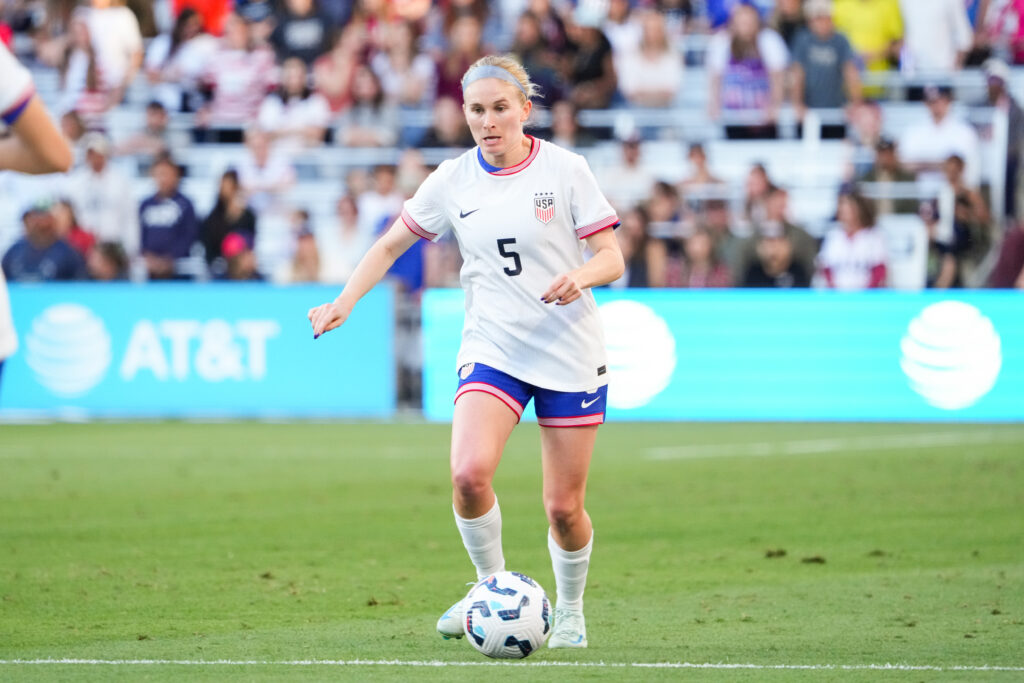
Nighswonger talks overcoming adversity
While she downplays any talk of strife between her and her former NWSL club, some of the adversity she mentioned did show on the pitch. Nighswonger didn't start in Gotham's final regular season game — nor their two postseason matches — with the club instead featuring WSL product Jess Carter and longtime veteran Mandy Freeman.
With Gotham players Carter, Freeman, and Brazilian defender Bruninha all under contract through 2025, Nighswonger's position had become a little crowded. She also had her work cut out for her on the USWNT, struggling against the Netherlands alongside her teammates before coming off at halftime in 2024's hard-fought final friendly.
But none of those factors spell disaster for a young player. Instead, they might simply signal a need for a change. And Nighswonger won't be without Arsenal allies to get her through it. Soon, she'll be suiting up beside fellow USWNT star Emily Fox, who has excelled since joining the Gunners in early 2024.

It's 'full steam ahead' with Arsenal
Nighswonger named Fox as an important point of contact during her transfer decision. She also mentioned her excitement to learn as much as possible from Katie McCabe, with the Ireland captain having run Arsenal's left flank for years. And off the pitch, she's ready for every new challenge.
She's eager for Fox to show her around London. Additionally, she can't wait for her first match at the Emirates, the women's side's primary home this season. She's already heard good things about player housing. And when touring the facilities for her medical checkup, she was awestruck by the English club's rich history.
"I've wanted to come here since I was seven because I watched the Premier League," she said. "It's always been a dream of mine."
Nighswonger is now laser-focused on getting up to speed, integrating herself into the locker room culture Arsenal has already established. From there, it's all about competing for trophies against the other ambitious European sides. With Chelsea catapulting ahead in the WSL standings and a slew of top squads vying for this year's UEFA Champions League title, Arsenal's success will surely be a team effort.
"We're going after trophies," Nighswonger told JWS. "I'm here to help the team win, and I know they want to win, too. So full steam ahead."
USWNT and Gotham defender Jenna Nighswonger is apparently UK-bound, with The Athletic reporting Monday that WSL side Arsenal will receive the 24-year-old in exchange for a $100,000 transfer fee.
The 2023 NWSL Rookie of the Year is technically under contract with Gotham through 2025, but the terms of the deal have reportedly been agreed upon by both teams.
A decorated pro debut
After going fourth overall in the 2023 NWSL Draft, the Florida State alum and 2021 NCAA champion helped Gotham earn their first-ever league title in 2023 before adding an Olympic gold medal to her resume with the USWNT last summer.
Despite her successes, a Gotham roster reshuffling saw Nighswonger's club minutes limited after she returned from Paris. The NJ/NY franchise tapped veteran defender Mandy Freeman for more playing time in the latter half of the 2024 NWSL season, plus boosted its backline by signing England international and five-time WSL champion Jess Carter to a multi-year contract last July.
Besides possibly offering Nighswonger an increase in competition minutes, a move to Arsenal would see the outside back link up with fellow USWNT star Emily Fox.
The two US defenders, as well as Australian left back Steph Catley and Ireland captain Katie McCabe, would diversify the defensive options for newly minted Arsenal head coach Renée Sleger as the fourth-place Gunners look to regain their grip on the league table.
Nighswonger joins growing trend of WSL-bound stars
If confirmed, Nighswonger will be the third NWSL player to defect to the WSL in the last 10 days, joining two-time NWSL Defender of the Year Naomi Girma and 2023 NWSL MVP Kerolin.
While the Brazilian forward and recent NC Courage standout joins Manchester City as a free agent, WSL leaders Chelsea FC had to shell out a record $1.1 million transfer fee to the San Diego to secure Girma's early exit from her Wave contract.
An age-old rivalry headlines the WSL this weekend, as second-place Arsenal gears up for Sunday's Stamford Bridge showdown against league leaders — and reported recipient of USWNT star Naomi Girma — Chelsea FC.
Both clubs are on an undefeated tear, with Chelsea yet to register a loss halfway through the 22-match 2024/25 season.
Meanwhile, newly minted head coach Renée Slegers's Arsenal will attempt to avenge the Gunners' lone loss — a 2-1 October stumble to first-season WSL boss Sonia Bompastor's Blues.
Chelsea and Arsenal's dominance goes beyond the WSL, as both sides also advanced to the semifinals of the League Cup with massive shutout wins this past Wednesday.
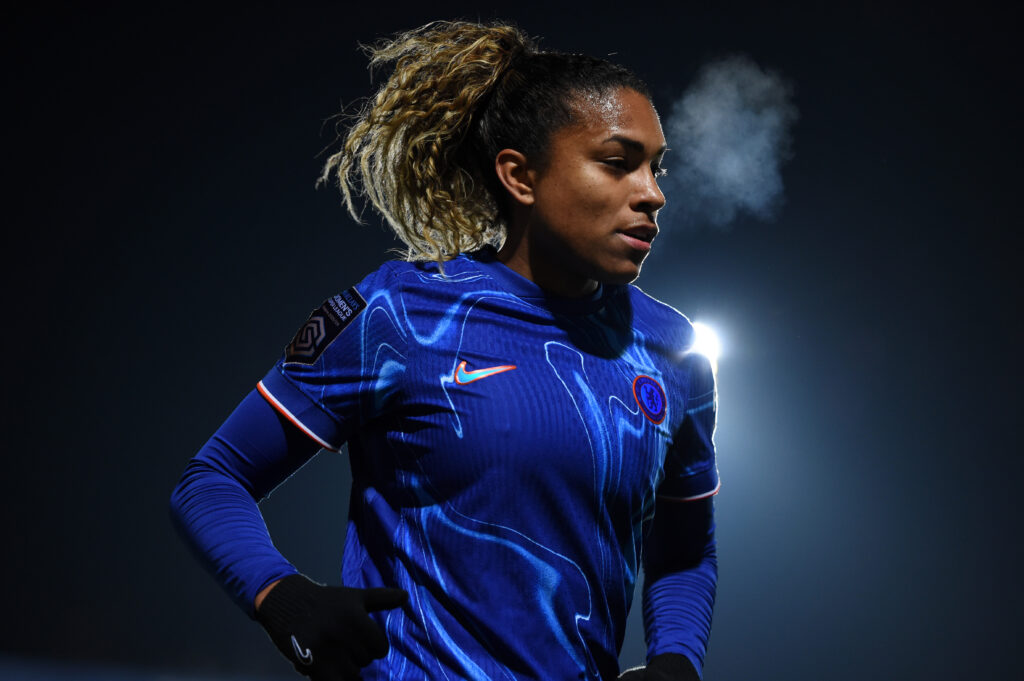
Wright shines spotlight on WSL investment debate
A product of a system that often places men's and women's teams under the same leadership, Chelsea and Arsenal have set the standard for the top-flight UK league — and cast other clubs in their shadow.
As some WSL teams continue to snag top international stars, those seeing departures risk falling by the wayside — putting into question a system that might be inhibiting the league's growth and parity.
"In England, with the women's league, I believe if you gave some owners the opportunity to back out of supporting the women's game, I think they would, simply because I feel like they're all about profit," Arsenal legend and outspoken women's football advocate Ian Wright told The World Economic Forum in Davros this week.
Wright acknowledged that the women's game, which suffered from a near 50-year FA ban, is still "playing catch up on every level, infrastructure, training, coaching and every level of development."
"Because of the past it wasn't allowed to be built up, so we are trying to do that now. So, it needs owners, individuals and corporates that will invest."
Currently, the English FA is considering expanding the lower tiers of the women's football pyramid to incentivize development and professionalization at the club level.
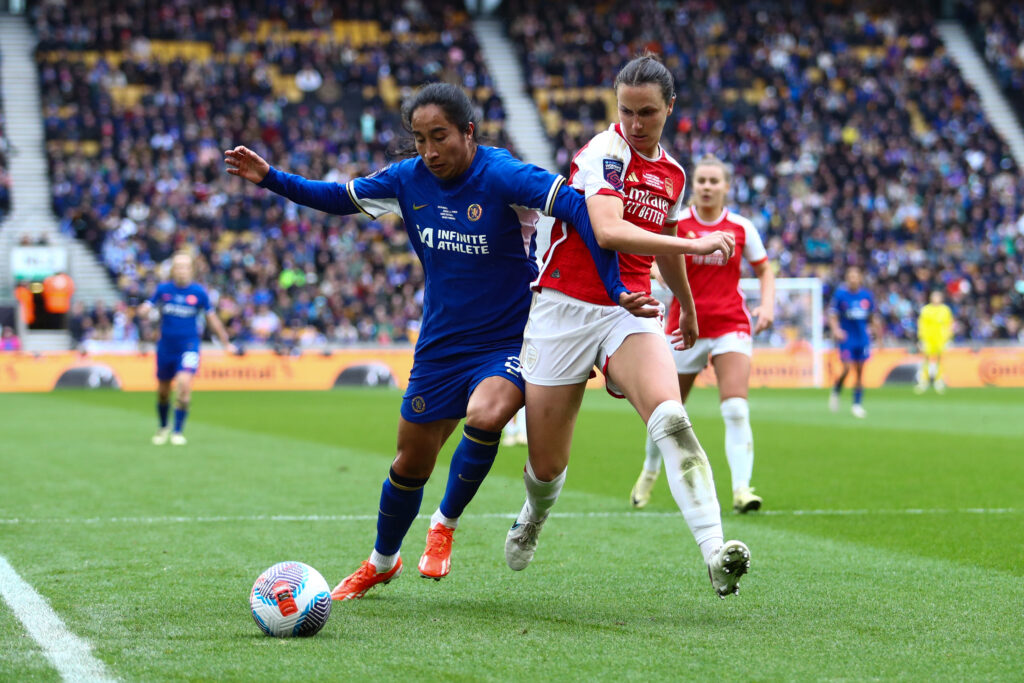
How to watch WSL rivals Chelsea vs. Arsenal in the London Derby
Sunday's WSL rivalry match pits the league-leading Blues against the Gunners at 7:25 AM ET, with live coverage on ESPN2.
USWNT star Naomi Girma will reportedly become the first women's soccer player to garner a transfer fee of over $1 million, as the decorated young center back narrows her overseas suitors down to WSL side Chelsea FC.
The 24-year-old defender is currently under contract with the San Diego Wave until 2026, and reported to the NWSL club's first day of preseason training as expected on Tuesday.
While Girma's contract is still in negotiations, San Diego and the UK titans have agreed upon the deal's $1.1 million terms — by far the highest sum in the history of pro women's football. The previous record is held by Rachael Kundananji, for whom Bay FC shelled out $860,000 to Spain's Madrid CFF to roster the Zambian forward in February 2024.
Chelsea, who currently stands unbeaten in the WSL halfway through the league's 2024/25 season, is keen to bolster their back line after losing star Canadian center back Kadeisha Buchanan to an ACL injury last November.
France's Olympique Lyonnais also threw their hat in the the million-dollar ring for Girma, only to fall out of contention alongside Chelsea rival Arsenal.
San Diego's Wave of roster turnovers
Assuming the transfer goes through, Girma will be one of several high-profile players exiting the 2023 NWSL Shield-winning San Diego club ahead of the 2025 season. Girma joins the NC Courage-bound attacker Jaedyn Shaw in making a SoCal departure.
In response, the Wave has been actively filling roster spots, signing 17-year-old defender Trinity Armstrong off of her 2024 College Cup-winning freshman season with UNC last week before adding seasoned goalkeeper and free agent Didi Haračić as well as Nigerian midfielder Favour Emmanuel on Monday.
Inking Armstrong to a three-year deal seems particularly strategic in the wake of Girma's likely departure. It signals that the Wave are again looking to young defensive talent to replace the 2022 NWSL Draft No. 1 pick.
Ultimately, a transfer fee of this magnitude solidifies Girma's reputation as one of the world's top defenders. While still accounting for less than 1% of spending in the men's game, her historic fee is further proof that the global women's market is growing at breakneck speeds.
Some of the NWSL's brightest stars made headlines this week, as the league's free agency transfer window continues to turn heads both at home and abroad.
Brazil forward Kerolin is officially departing North Carolina after spending all three of her NWSL seasons with the Courage, the club confirmed on Wednesday. The 2023 NWSL MVP will reportedly head to the WSL's Manchester City in a deal extending through 2028.
Sources are also linking two-time NWSL Defender of the Year Naomi Girma to the first $1 million transfer offer in women's soccer history, courtesy of French side Lyon and UK titans Chelsea and Arsenal. The 24-year-old USWNT star's current contract with the San Diego Wave runs through 2026, making a transfer fee a necessary part of any earlier deal.
The current record for a women's soccer transfer fee is $860,000, which Bay FC shelled out to receive Zambian forward Rachael Kundananji from Spain's Madrid CFF in February 2024.
More NWSL teams make moves to lock down contracts
NWSL preseason has already started for select clubs, with teams putting the final touches on solidifying both their rosters and front offices.
Angel City hired former Portland Thorns FC and Washington Spirit head coach Mark Parsons as the club's new sporting director on Wednesday. The franchise is still searching for a permanent head coach after parting with boss Becki Tweed in December.
The 2022 expansion team also signed veteran forward Christen Press to a new one-year contract, per a Friday morning press release.
Meanwhile, with Girma's possible departure dominating the rumor mill, the Wave announced the addition of 17-year-old UNC defender and 2024 College Cup champion Trinity Armstrong to the club's ranks on Thursday.
Though Girma's fate is yet to be confirmed, San Diego's decision to pick up a talented young center back — on a three-year contract, no less — supports the theory that the USWNT standout is on the move.
The 2024/25 Barclays Women's Super League (WSL) season kicks off this weekend in the UK, where 12 teams will launch campaigns to challenge seven-time league champions Chelsea for the season's title.
Adding to the excitement are major roster shakeups and big name signings entering the pitch for the WSL's 14th season.
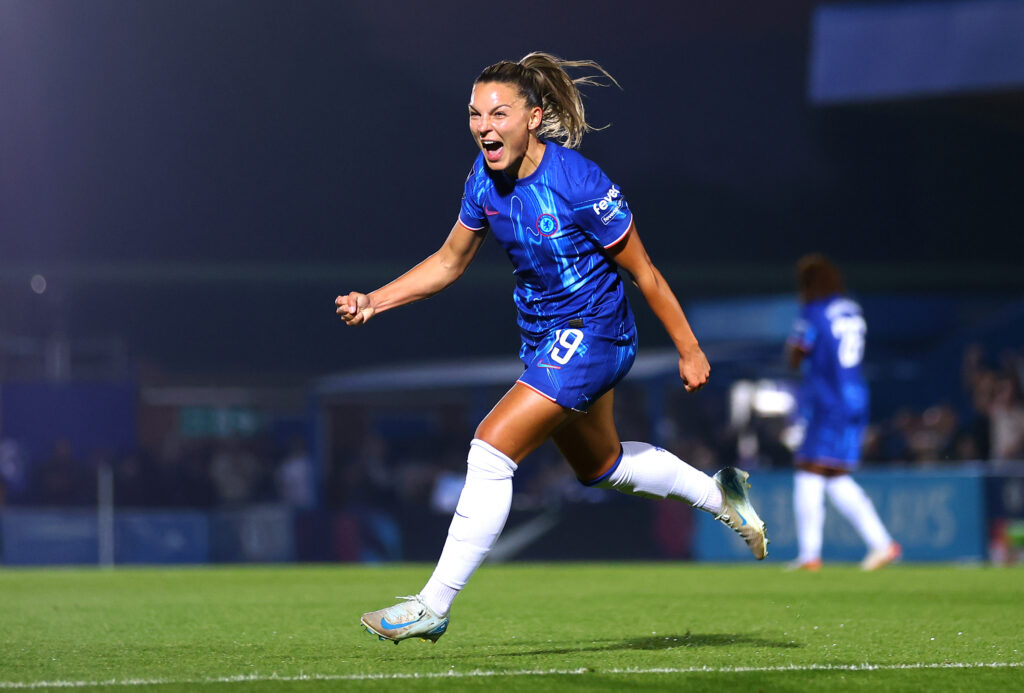
Defending WSL champs Chelsea open post-Hayes era with a win
In front of a sold-out Kingsmeadow crowd on Friday, the Blues began their first campaign without now-USWNT boss Emma Hayes by defeating Aston Villa 1-0. Midfielder Johanna Rytting Kaneryd's first-half strike from distance secured Chelsea's season-opening win.
Helmed by head coach Sonia Bompastor, who previously led France's Lyon to three straight titles and a 2022 Champions League victory, Chelsea enters the season with a target on their backs after five straight years at the top of the WSL table.
With five members of the Blues staff following Hayes Stateside and multiple veteran players — like England national Fran Kirby — also departing the club, Bompastor is now tasked with building a new-look culture while maintaining the club's standard. Her job is that much more difficult given four athletes, including Australian star Sam Kerr and the USWNT's Mia Fishel, are still out rehabbing ACL injuries.
Though Chelsea added top players like the Lionesses' right-back Lucy Bronze, all eyes will be on the Blues to see if their dynasty continues this season.
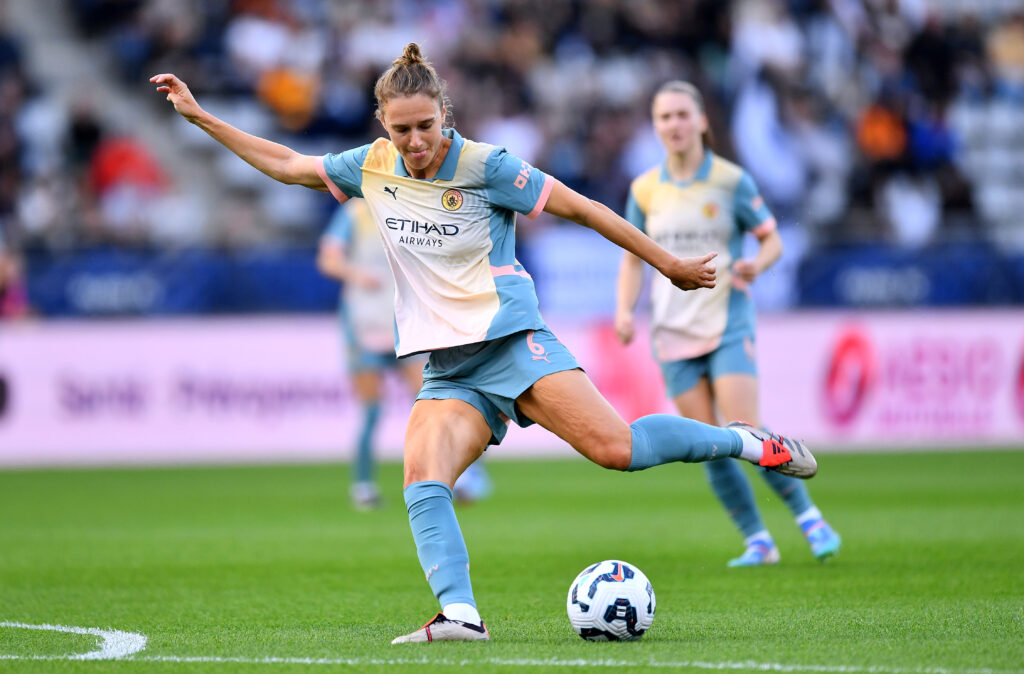
Miedema's return headlines WSL opening weekend
The Blues aside, the highlight of the WSL's season-opening weekend is the blockbuster matchup between an Arsenal legend and her former club.
Dutch striker Vivianne Miedema will play her first regular-season WSL game with Manchester City on Sunday, when the ex-Gunner will face Arsenal in a highly anticipated Emirates Stadium showdown.
The two clubs — who both finished the 2023/34 WSL season just behind Chelsea in the standings — are coming off vastly different UWCL results this week, after Arsenal lost 1-0 to Häcken and Man City defeated Paris FC 5-0.
How to watch Arsenal Women vs. Manchester City this weekend
Arsenal WFC will take on Manchester City at 7:30 AM ET this Sunday, with live coverage on ESPN+.
In the UK, the path toward becoming a professional soccer player starts early.
Kids in the US usually start out with local or travel clubs before moving to a high school team and then maybe playing in college before going pro. And recently, a small but growing number of teenage players are opting to sign contracts with the NWSL before they’ve even finished school.
But across the pond in the UK, a promising footballer’s road to stardom can start as young as five years old. The academy system was established to guide aspiring young players as they work towards an adult contract, with professional clubs like Arsenal, Liverpool, West Ham, Chelsea, and others supplying their youth programs with full-time coaches, training facilities, and a match calendar. Then at 18, the senior club either offers the player a pro deal or releases them to pursue a spot on another team’s roster.

The goal has always been to nurture and sustain homegrown talent, with academies around the league producing WSL and England national team icons like Leah Williamson, Lauren James, Lotte Wubben-Moy, Lauren Hemp, Chloe Kelly, and Mary Earps. And now more than ever, it’s something big league teams are focused on given the women’s game’s meteoric post-Euros rise in the UK.
Of course, academy life isn’t just afterschool practice and weekend fixtures at the training grounds. When senior clubs travel for international friendlies, they’ll often invite a few academy players to tag along. It’s a way to give the young players some exposure, bonding time with the team, and minutes on the field, all while the coaching staff has the opportunity to evaluate their progress and see how they gel with the club.
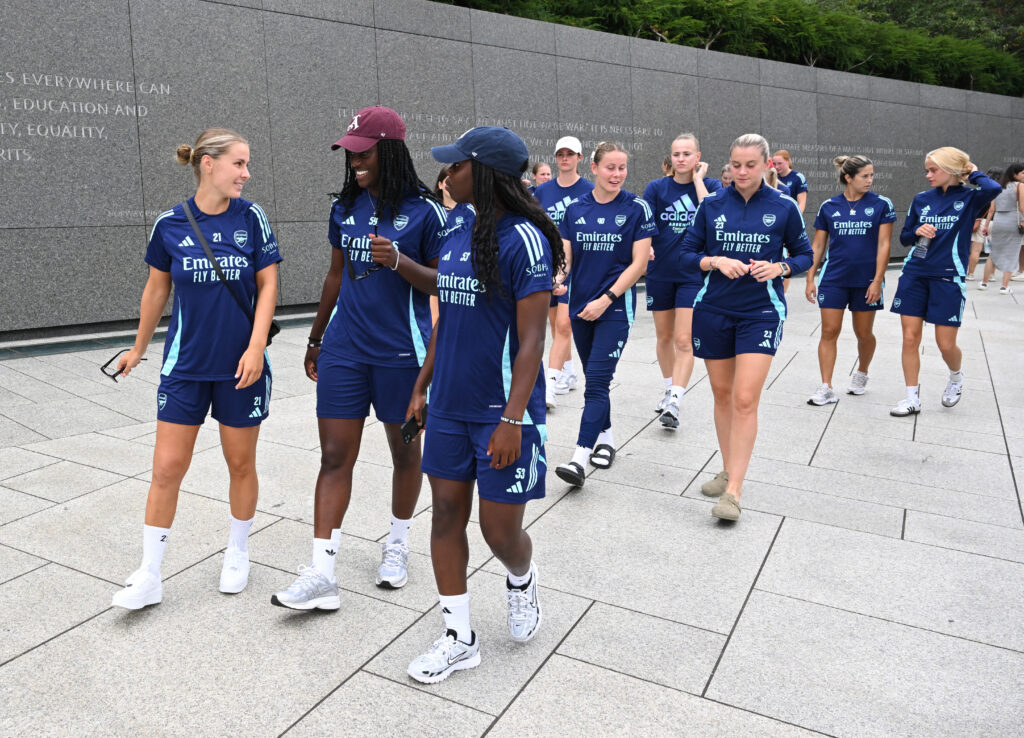
That was the case for Michelle Agyemang and Vivienne Lia, two up-and-coming academy products who joined Arsenal FC on their recent USA tour. 18-year-old Agyemang recently graduated from Arsenal’s academy, signing her first pro contract with the team this past May after debuting in November 2022 at the age of 16. 17-year-old Lia is still finishing school and academy training, having taken the field with the senior club for the first time in February 2024.
Last week, JWS spoke to the England U19 standouts in Washington, DC ahead of Arsenal’s friendly with crosstown rivals Chelsea to learn more about their journeys from childhood Gooners to academy superstars and beyond.
How's the trip going so far?
Michelle Agyemang: So far good. I think it's been good to go out and see the monuments and stuff, and obviously training. It's been nice to be around everyone as well.
Viv, this is your second team trip after Arsenal’s Australia exhibition in May. How are you finding it?
Vivienne Lia: It's great. Australia was more hectic with the fans, but over here it's been relaxed. But it's also been more dense — because it's pre-season, we've been working a lot more than we did in our postseason trip.
How old were each of you when you signed with Arsenal Academy?
MA: I was six.
VL: I was 14.
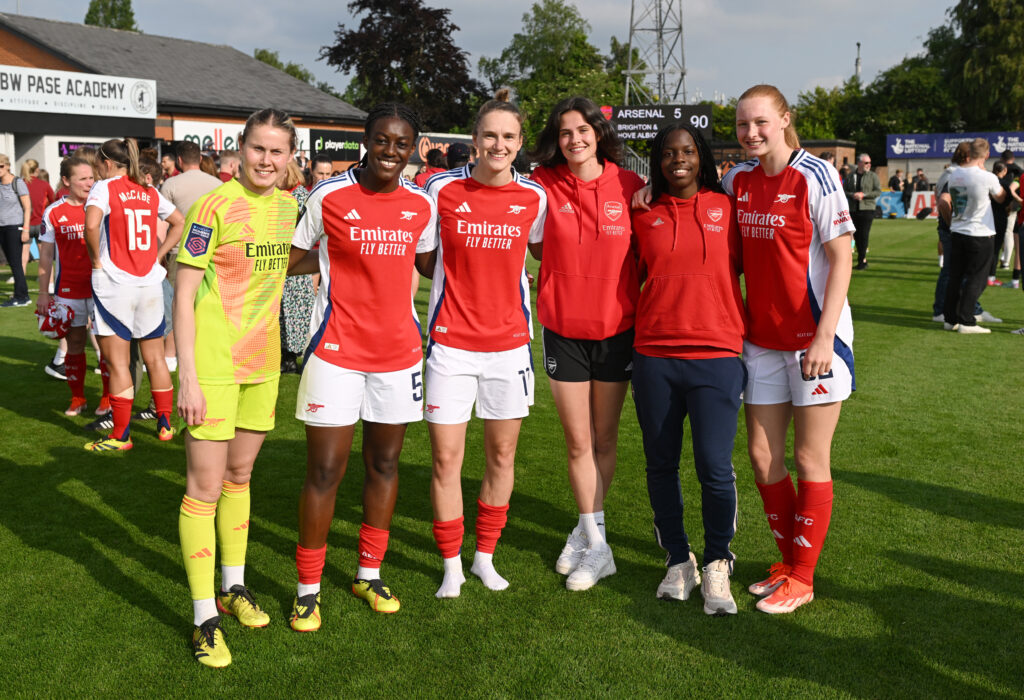
I know Arsenal has recently moved away from academy trials and now uses a talent identification team to recruit young players, but what was the process like when you joined?
MA: At the time, you just apply on a website, come in for a massive trial with about 30 girls, do a bit of training, and then if you're successful, you go to a second round with less girls. And that's it: Two sessions and then they send you an email or a letter. It's quite simple really.
VL: Mine was quite similar. There was a trial system: one and two trials. At the first one there were quite a lot of girls and then it cut it off a bit. From there, you get an email whether you got in or not. Now it's changed where they don't have open trials — you come in for training sessions instead.
Did your parents sign you up?
MA: I was playing for a local boys team and my dad was like, "Oh, might as well just sign her up." So he did, for a few different teams. And then we literally just rocked up to [a pitch] not too far from Colney for a little training session.
Do you remember that day?
MA: I do quite well. To be fair, we got lost on the way. We went to, I think it was a little farm instead of the training pitch. And then I remember my dad, he kind of pranked me a bit. He was like, "Oh yeah, sorry Michelle, you didn't get in." Then he actually brings out the letter. So it was really cute — a really good day.
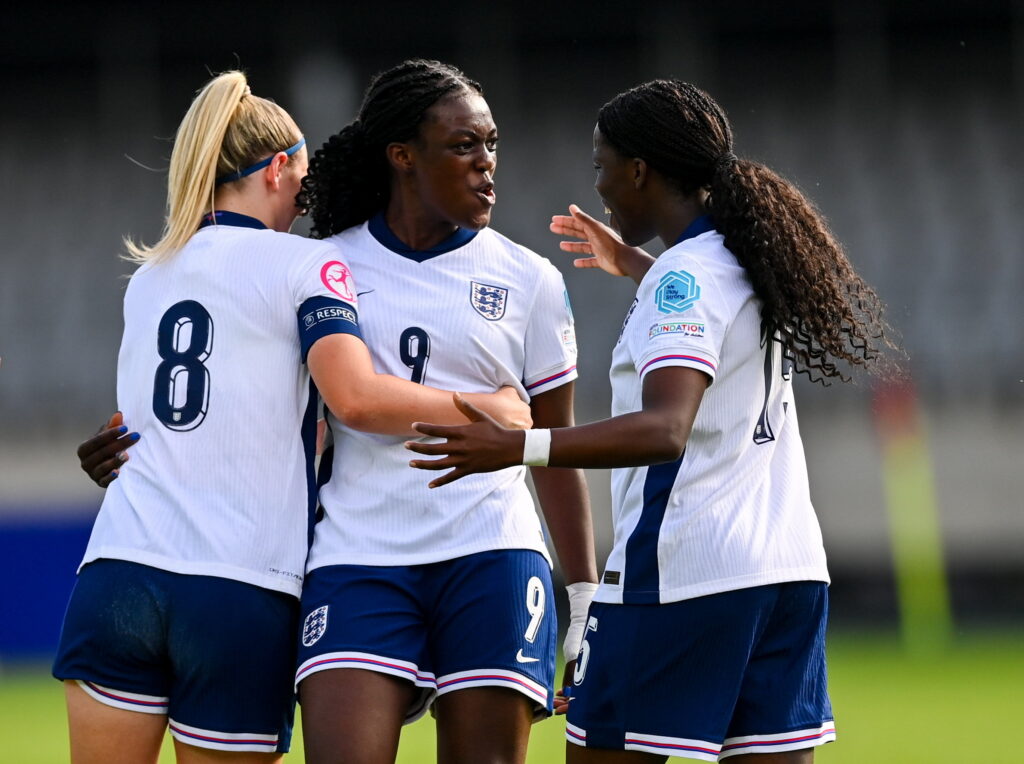
If you were raised in the US, do you think you would have tried to turn pro at a young age or opt for the college route?
VL: I think probably the school route, because you want to get a firm foundation of education first. Because your career is not guaranteed at whatever age — you can get an injury, God forbid, and of course that's part of the game.
MA: I'd say the same. It’s also the experience of college — so many of my friends have gone through college and it just looks like good fun, obviously alongside football. You miss that if you go straight to pro. Getting school alongside football is something we don't get in England, so I think that'd be a really good balance to have between the two.
When you're in the academy, how much time are you devoting to soccer?
MA: I'd spend as much time as I could on both. So as soon as I finished school, I'm straight into the car, changing in the car, eating in the car, doing homework in the car, on the way to training. And then on the way back, I slept. It was an endless cycle but that was the only thing I knew.
VL: When you're younger, it's still a mix of it being a hobby but still your passion. But then as you get older — when it becomes more jam-packed, more serious — you have to try and find a balance between both. In England the systems are split, so you still have to go to school, but you also have to go to training. For me now, I go into school two, three times a week and training as well, so it’s about finding a good balance.
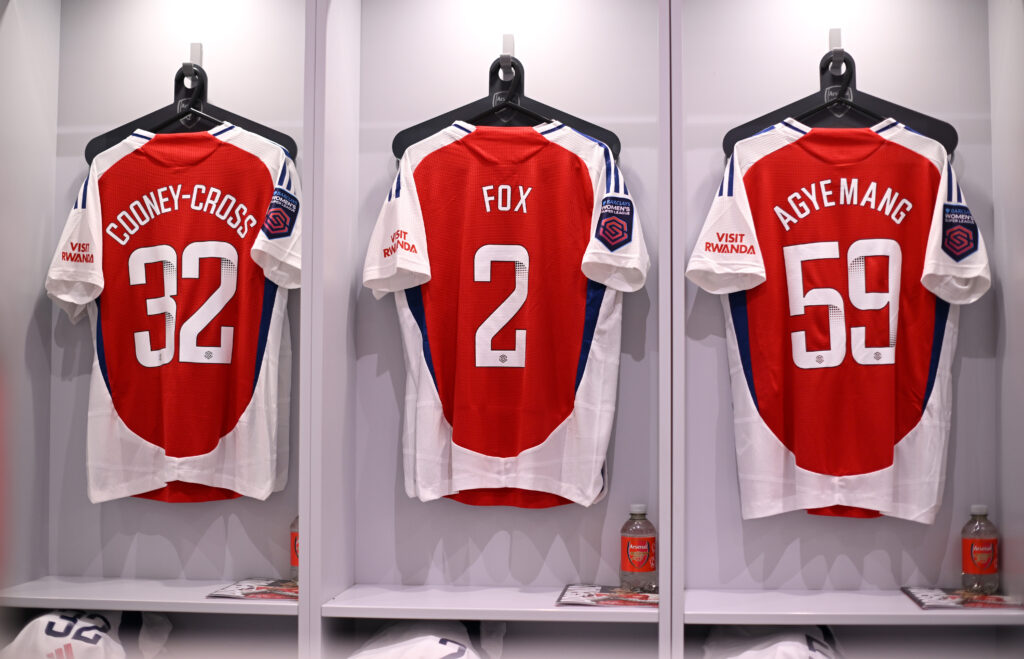
So you’re both lifelong Gooners — was Arsenal always the dream?
VL: Yeah, 100%. That was the dream for me. Of course, I grew up in North London — everyone's either Arsenal, Tottenham, Chelsea, or you got the odd northern team they support. Everyone wants to play for their local club, their childhood club. It was always a dream of mine to play for Arsenal and to make history at this club.
When you were younger, did you see women’s football as a viable career path?
MA: Absolutely not, no. My mum was saying to me the other day that she just thought I'd just go to Arsenal to do a few training sessions and then come back home. But the development of the game has been so fast in recent years. So I never really saw it as a career until maybe under-10s, -12s when it actually started to get much bigger as a game. At the beginning, I don’t think I had a real plan for football. But things change, and here we are.
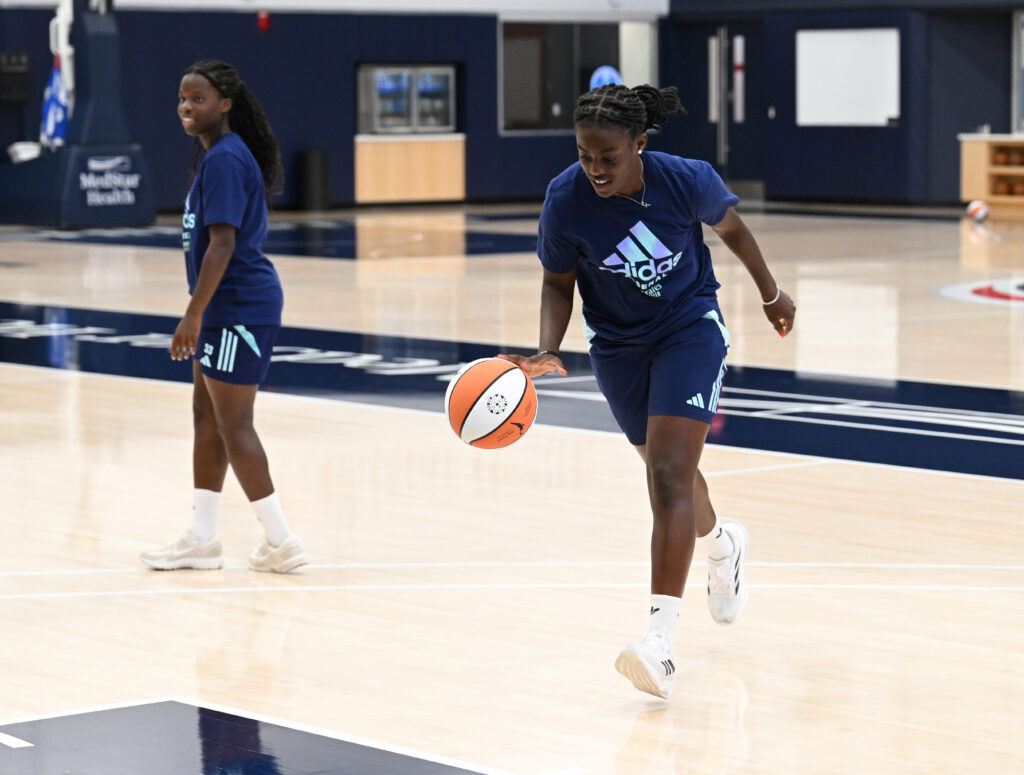
Was the experience the same for you, Viv, seeing as you joined the academy a bit later?
VL: Different actually. I always wanted to be a footballer — or at least an athlete. It was either tennis, track, or football for me. But I always had more of a love for football, so I was like, "Okay, if I don't become a footballer, I'll be a tennis player instead." Like, "I'll be in sport."
Football was always what I wanted to do, but I wasn't completely sure it was possible. But as a kid you're like, "Oh yeah, it'll be possible. I can do anything." So I didn't really think of that side of it until I got older I was like, "Oh, this is actually something that I can do as a profession."
How has your game changed as you've gotten more time at the senior level?
MA: At Arsenal, the passing, the movement — everything is so crisp. It's a shock at first but you adapt. For my game, I’ve added more technical bits: passing, moving, working together as a team. As a kid, you want to go run and score 10 goals, but you obviously can't do that here. So working with teammates, moving the ball, moving myself to help other players — that's a big part of my game that I've improved here.
VL: The details are so important at this top level. At youth level, you can get away with not pressing as hard or not recovering as quick, but [in senior club games] you'll get punished for that. It makes sure that you're always working to the best of your ability, but also it switches you on mentally. You have to keep attuned to how quick the game is or spot different triggers — that's the main difference between senior football and youth football.
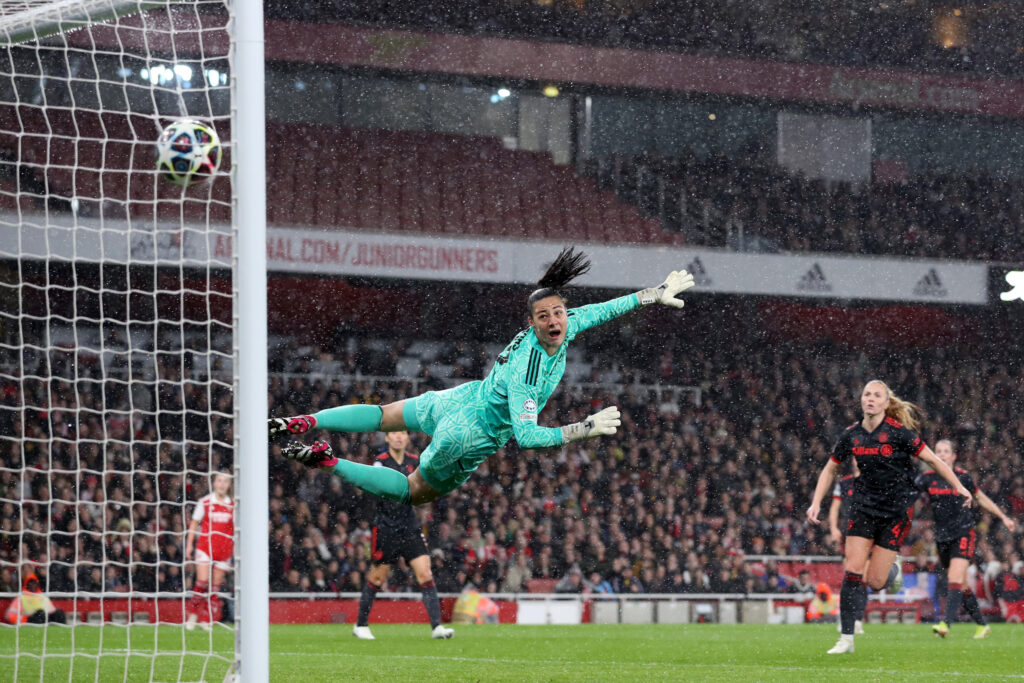
What is your favorite Arsenal memory?
VL: It was the season before last season, the Champions League game against Bayern Munich at home when Frida Maanum scored top bins. I was ball-girling for that and I had the perfect view of it. I was like, "This is the best goal I've ever witnessed in my life." Being an Arsenal fan, [knowing] the context of that game, I was like, "Wow, this is incredible."
MA: That's a good one. I’ll go for two seasons ago when we played Wolfsburg at home in the [Champions League] semi-final. I think it was two-two going into the second leg and then for me, coming on very late in the game — a Champions League debut — that was a massive moment. Just the atmosphere, 62,000 fans, everything.
After playing the Washington Spirit earlier this week, how do you find the NWSL compares to the WSL? Is there a different flow to the game? A different approach?
MA: We always associate America with athleticism, so the transition element was so fast at every point in the game, from the first minute to the last. And the atmosphere was very interesting as well. You got the fans hyping up a corner kick — like, "Get up and cheer. It's a corner kick!" I've never seen that in my life, never ever seen that, but it’s nice as well. I liked it.
VL: Yeah, the game was very fast-paced. But it was really on runs, their wide players just bombing it forward. The physical level of the game is top. As you said, the rest of the world associates America with athleticism — powerful, fast, physical. That was something that I thought of straight away, like it's less technical but still at a high level.
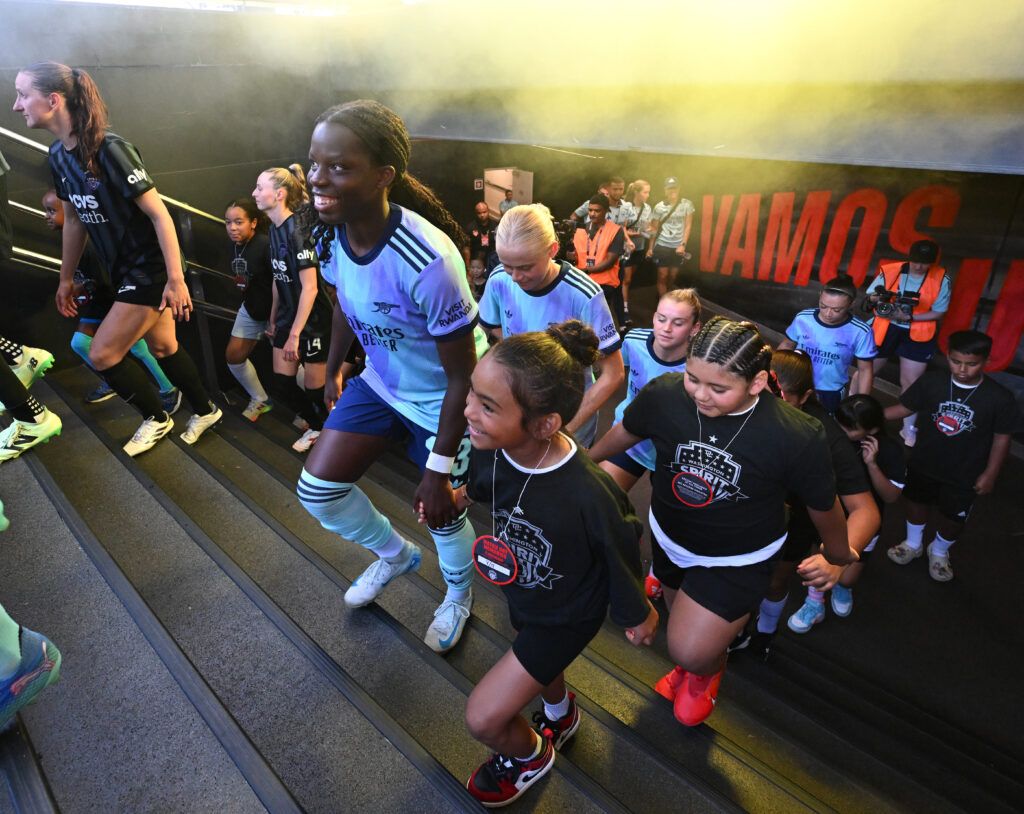
Where do you guys see yourself in five years?
MA: Right here.
Right in this room?
MA: Yeah. (laughs)
VL: In DC?
MA: Yeah, in DC. It would be awesome coming back. Imagine.
VL: I'll say the same: At Arsenal, establishing myself in the senior game and really showing what I'm about. And that's it — that's a good one.
While the NWSL doesn't officially return to regular season play until Friday, clubs were nonetheless in full swing this weekend as international matchups took centerstage.
On Saturday, the Current lifted The Women's Cup trophy in Kansas City after beating Atletico Madrid 1-0 behind Debinha's first-half goal.
Then in Sunday's friendly action, the Spirit fell 2-1 to the WSL's Arsenal behind Alessia Russo's brace, which one-upped a close-range strike by Washington's Ouleymata Sarr. Meanwhile, Angel City notched a massive friendly win of their own, taking down Liga MX Femenil's FC Juárez 7–0 thanks to a hat trick from Messiah Bright.
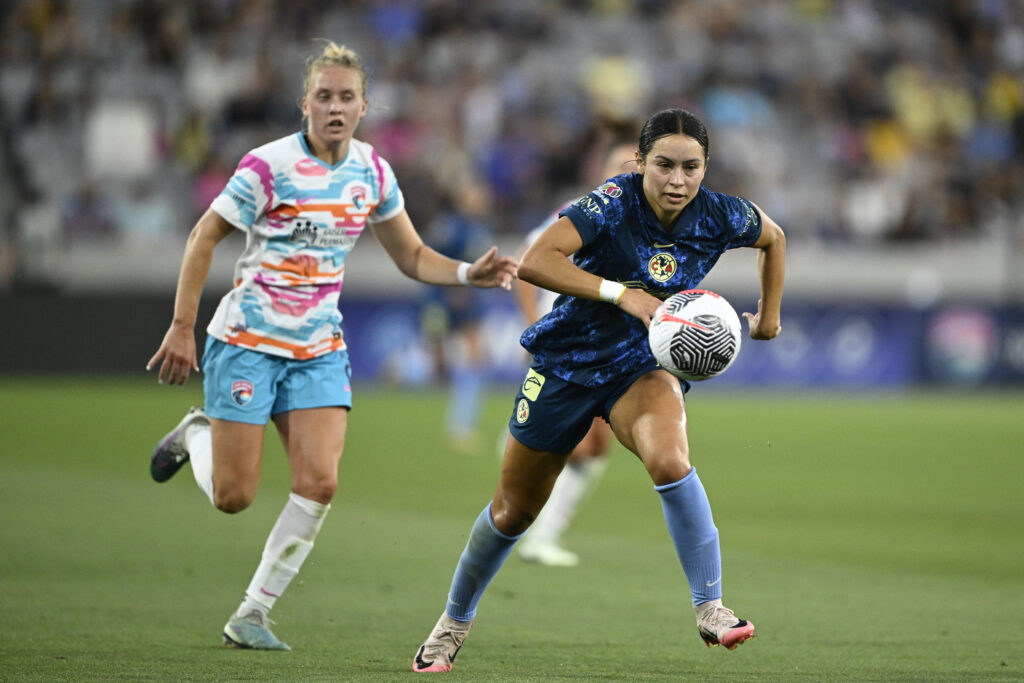
Concacaf W Champions Cup adds to international NWSL action
Perhaps the most intriguing moments of the NWSL's internationally tinged Olympic break will come courtesy of the Concacaf W Champions Cup's group stage openers. Similar to the UEFA Champions League, the budding competition's eventual victor will represent the region at FIFA's recently unveiled Club World Cup in 2026.
With Canada's Vancouver Whitecaps already beating Alianza Women FC in the tournament's preliminary round, this week's group stage slate includes Panama club Santa Fe hosting the San Diego Wave, Alajuelense taking on Frazsiers, Club América facing Vancouver, and a intracity clash between Monterey's Rayadas and UANL Tigres.
Other NWSL teams set for next month's Champions Cup group stage action are Portland and Gotham FC, who will face Club América and Alajuelense, respectively.
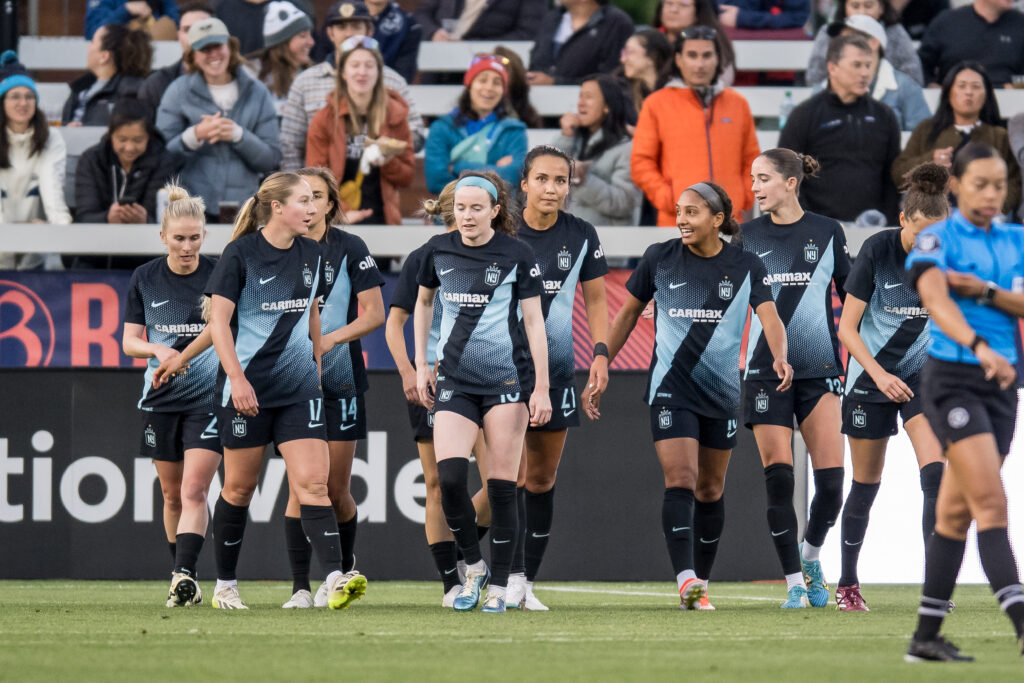
NWSL schedules more international club play
In another friendly meeting between the NWSL and WSL, Gotham will take on Chelsea in New York tonight at 7 PM ET (streaming on FuboTV) before Arsenal and Chelsea square off next week in Washington, DC.
NWSL newcomer Bay FC is also jumping into European friendly play with a match against UEFA Champions League victors FC Barcelona scheduled for August 27th.
The Barclays Women’s Super League officially kicks off its 2024-25 run the weekend of September 20th with six matchups across three days setting the stage for the much-anticipated WSL season.
The WSL is growing in more ways than one, and next year’s league title is very much anyone’s to grab.

Growing attendance spurs Arsenal move to Emirates
After drawing an average of 52,000 fans to each of their six Emirates-hosted games last season — including two complete sell-outs and three WSL attendance records — all 11 of Arsenal’s upcoming home matches will be played at Emirates Stadium. This makes the North London behemoth — home to Arsenal’s men’s Premier League team — the women’s team’s permanent 2024–25 season home.
Of the league’s 12 teams, only Arsenal, Aston Villa, and Leicester City will share gameday facilities with a top flight men’s division. The rest will play the majority of their matches at practice fields or smaller multi-use stadiums.
In addition to field conditions, access to training centers and equipment, and other on-pitch concerns, capacity is a central differentiating factor between men’s and women’s grounds. For example, Chelsea’s primary home of Kingsmeadow seats just 4,850 fans. Their Premier League counterpart's digs, Stamford Bridge — the 11th largest football stadium in all of England — can accommodate 40,343.
Arsenal’s move to Emirates was motivated in part by this divide, and after finishing the 2023-24 season in third place — nearly missing the cutoff for UEFA Champions League eligibility — the club is hoping this momentum will fuel their quest to lift the WSL trophy in 2025.
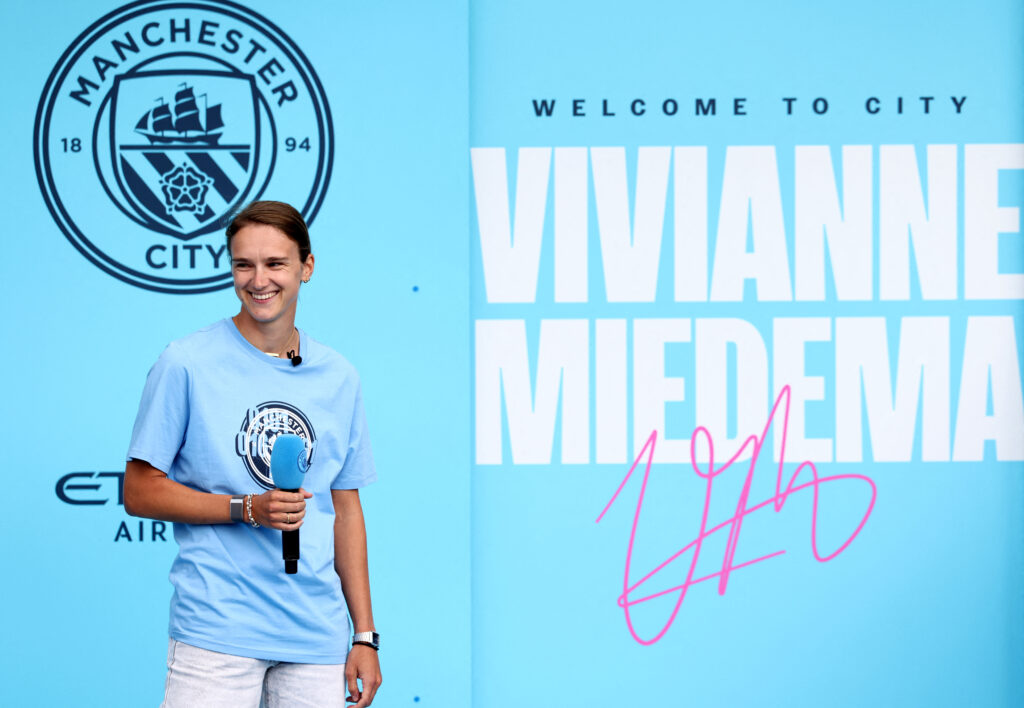
Offseason moves shake up WSL rosters
Arsenal isn’t the only WSL team on a mission to top the 2024-25 table, and teams around the league made serious waves in the offseason in a bid for this season's title.
Manchester City, 2024’s second-place club, bid adieu to Esme Morgan and Ellie Roebuck, but the club added a whole slate of stong footballers, highlighted by star striker Vivianne Miedema. Former West Ham full-back Risa Shimizu and Japan international Ayaka Yamashita are also joining a Blues roster that already boasts superstars like Khadija "Bunny" Shaw and Mary Fowler, among others.
As if losing Sam Kerr to an ACL tear last season wasn't enough, 2023-24 champs Chelsea have since seen Fran Kirby depart for Brighton, and defender Jess Carter and goalkeeper Ann-Katrin Berger flip to the NWSL’s Gotham FC. On the bright side, they snagged England mainstay Lucy Bronze from Barcelona, and Kerr should return to play this fall.
In Manchester United news, the Red Devils picked up Dutch defender Dominique Janssen but bid farewell to 2023 World Cup Golden Glove winner Mary Earps, who joined Paris Saint-Germain. Meanwhile, former captain Katie Zelem signed with ACFC this week.